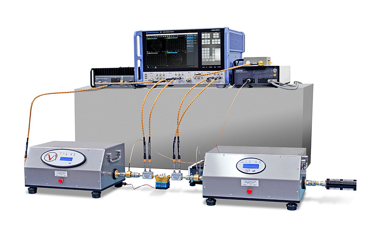Amplifier Characterization Using Load Pull

Load pull is a powerful method for characterizing RF power amplifiers through impedance variation. Load pull enables model extraction and validation as well as performance, ruggedness and efficiency testing.
Your task
You are designing a power amplifier, which is not inherently a 50 Ω device. However, the target environment is typically a 50 Ω world, so an appropriate matching network is required. The performance of the amplifier is highly dependent on the load impedance. You characterize the amplifier using different source and load impedances and optimize it for gain, output power (Pout) and power added efficiency (PAE). This helps design a suitable matching network. Amplifiers typically operate close to compression for best efficiency. Classic small-signal S-parameters would not adequately describe the device under test (DUT). Instead, you need large-signal excitation and load impedances without 50 Ω matching to characterize the nonlinear behavior of the DUT. Vector wave quantities (a1, b1, a2, b2) describe the DUT behavior and allow amplifier model creation and validation.
Contours of power added efficiency (PAE) in % and output power (Pout) in dBm
Get unlimited access to:
Enter your credentials below to log in. Not yet a member of RF Globalnet? Subscribe today.
